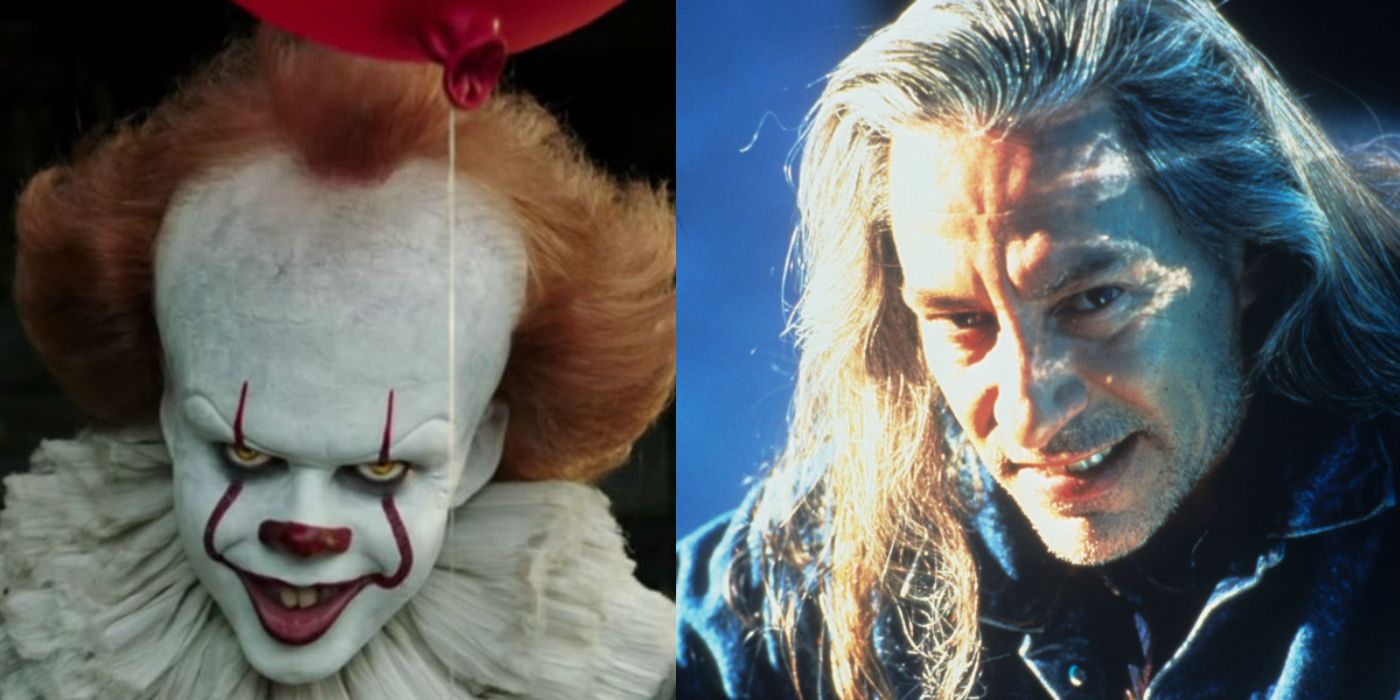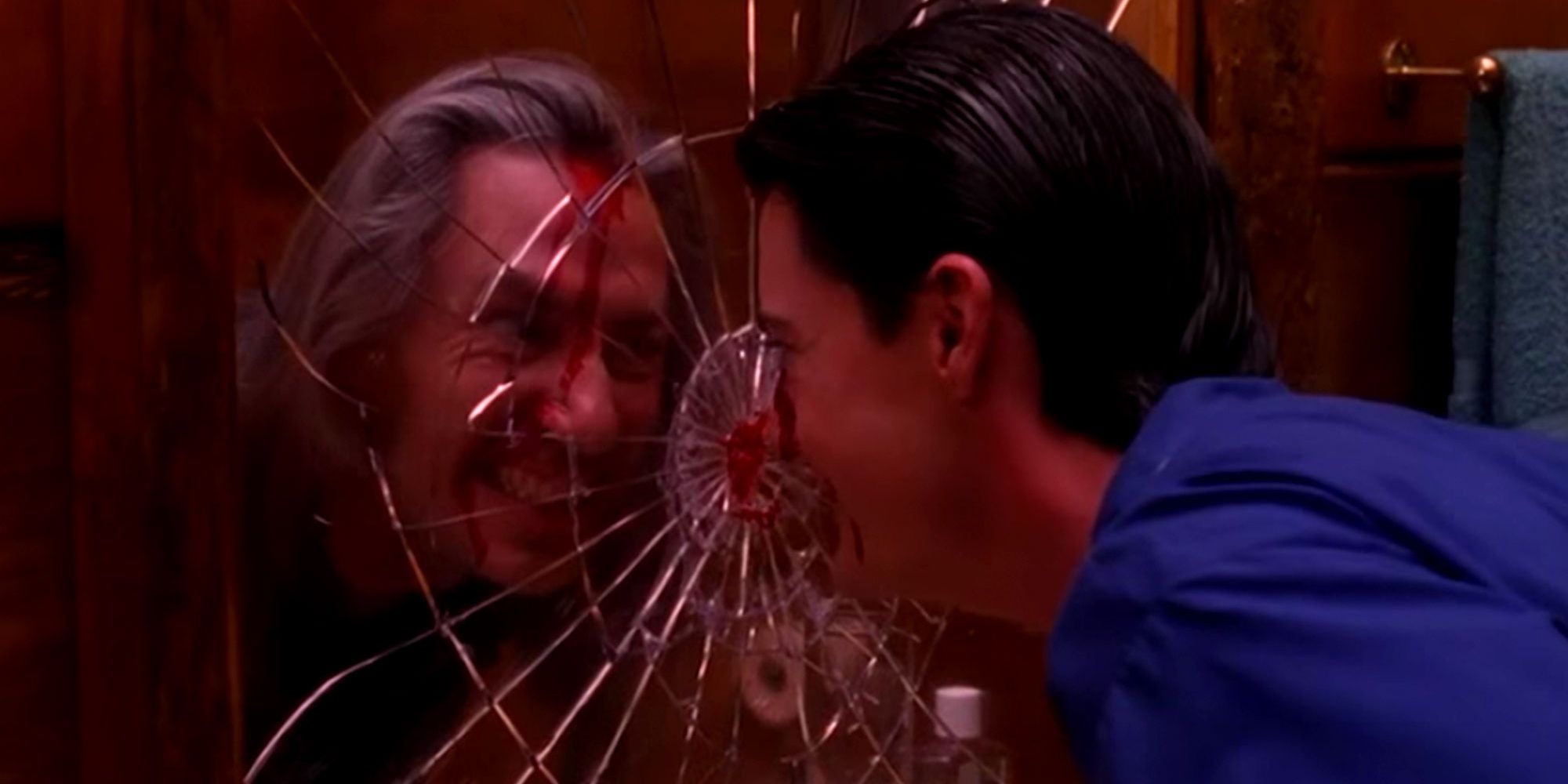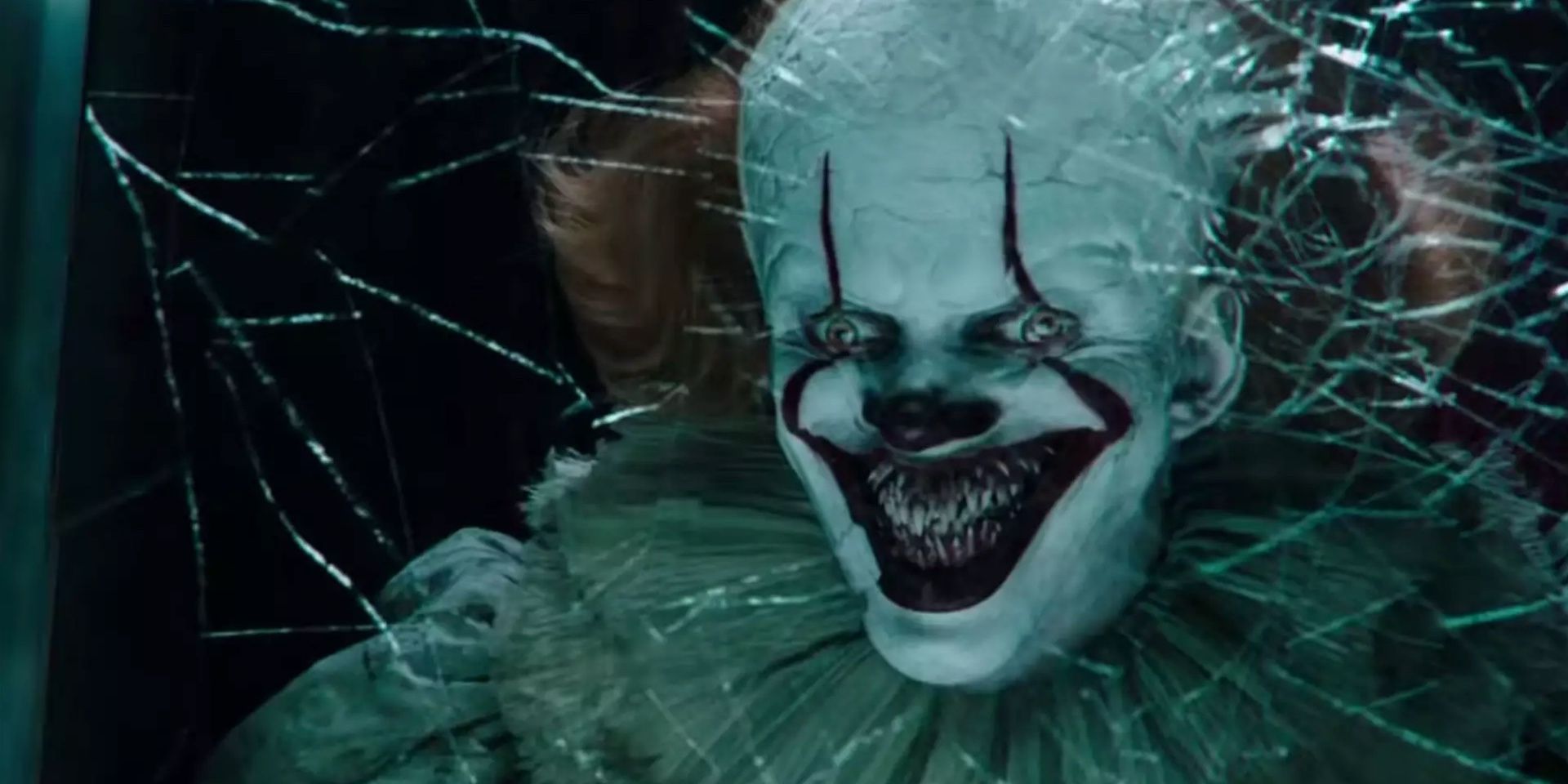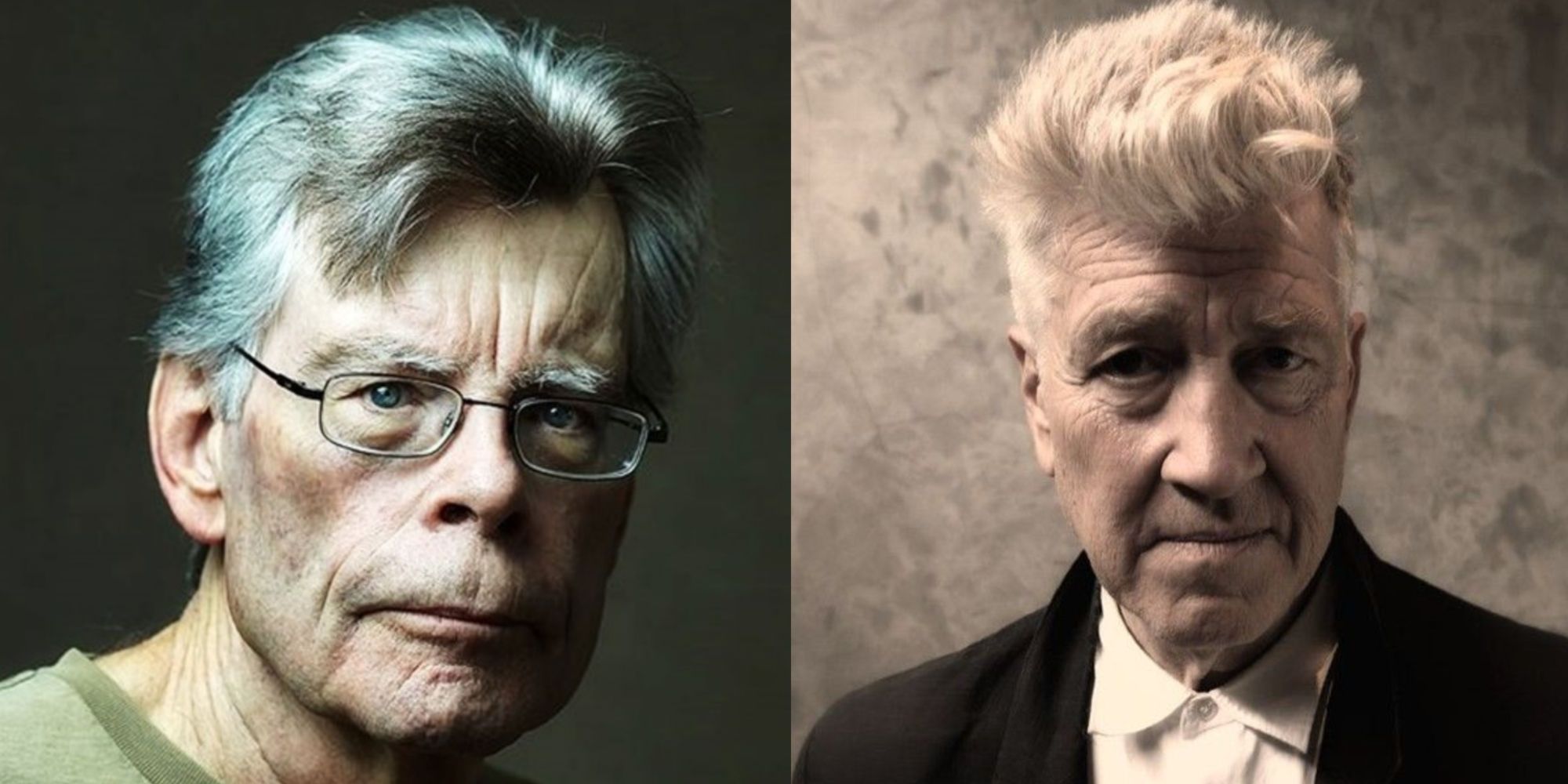
Stephen King's It and David Lynch's Twin Peaks have so much dark, otherwordly phenomena driving both of their stories that it's relatively easy to see the similarities in the two works. One of the most fascinating comparisons between the two is their horrifically surreal antagonists, who are both interdimensional creatures that can take on different physical forms in order to feed on the fear and suffering of their victims. The connection is surprisingly strong, leading to the inevitable fan theory that the two are, in fact, the same demonic entity.
This is far from the first theory to emerge out of either the bibliography of Stephen King or the filmography of David Lynch. The interconnected King multiverse is the subject of a vast web of speculation; a healthy chunk of it has been propagated by King himself over the years. Despite first airing in 1990, well before the Golden Age of Television normalized more experimental forms of long-form storytelling, Twin Peaks continues to hold a spell over its fanbase. The series, to this day, remains one of the most obsessed-over and revisited stories of its kind and predates other high-concept shows that thrive on audience speculation like Lost and Westworld.
The Pennywise-BOB connection implies that both of these universes collide with each other in order to create an even more expansive world. In It, Pennywise the clown is just one manifestation of an ancient evil that has existed since the beginning of time. The actual creature is shapeless and incomprehensible, delivering insanity to those who stare into its illuminated "deadlights", which are implied to be windows into its true form. Killer BOB from Twin Peaks is, likewise, a malevolent evil of unclear origins that wreaks havoc by possessing people to appear as recognizable, earthly inhabitants.

This shared ability to appear in benign-looking physical forms in order is one element that connects these two forces of pure evil. Pennywise chooses a clown to come across as innocent to children, only to feast on their fear once he's lured them in. Likewise, Killer BOB inhabits the body and mind of Laura Palmer's father, Leland, in order to sexually abuse and ultimately murder her. Although on the surface level he is a sadistic rapist and serial killer, the entity seeks to consume his victims' suffering through his violent acts.
In this sense, Pennywise and BOB are both creatures who deliberately hurt and torture people in order to "eat" the fear of others. As a result of this depraved and animalistic drive, they are responsible for acts of inhumane violence that have occurred within their respective hunting grounds throughout the years. BOB has tortured and killed multiple women, while Pennywise is the culprit behind Derry's string of child murders. The latter has also appeared at times of great cruelty, such as in the case of the burning of The Black Spot nightclub by white supremacists and the senseless killing of Adrian Mellon by a gang of homophobes.
The two evils also similarly hail from a separate, interdimensional plane of existence outside of the known world. Twin Peaks gives this mysterious place an identity in the Black Lodge, while the sewage system underneath Derry seems to be the nexus of a portal between the two dimensions in It. Pennywise itself most likely hails from the Todash Space, an elaborate idea that appears in King's The Dark Tower series, which connects many Stephen King books to this netherworld. If that's not enough convincing evidence, both entities also take on the name "Bob'" in their human forms, as Pennywise adopts the name "Bob Gray" as backstory to his clown persona.

Even with all of these similarities, it's still quite a stretch to conclude that Pennywise and Killer BOB are literally the same characters. Considering the purposefully vague and esoteric mythologies behind both of these entities, there's still a lack of definitive information to deduce that these two villains—born from separate creative minds—are one and the same. For instance, BOB doesn't seem to be able to shapeshift at will like Pennywise can. Instead, he possesses people in order to carry out his dark deeds. Pennywise is able to influence susceptible minds like town bully Henry Bowers and Beverly Marsh's father Al, but it's this lack of explanation that makes for a dubious connection between the two monsters.
There's also a difference in the way the two creatures "feast." In Twin Peaks, this concept is given a more defined form as "garmonbozia," a creamed corn-like substance meant to encapsulate the pain and sorrow in the world. Pennywise's feeding process is more direct, though, literally biting down on his victims' physical bodies after he's seasoned them with his scare tactics. The Twin Peaks revival establishes a backstory for BOB, implying that he's a Sumerian demon, thus further distancing him from Pennywise by giving the villain a more explicitly defined origin.
The Losers Club's discovery that the creature hunting them has existed in other cultures for centuries may sound like it helps to prove that Pennywise can manifest into other forms like BOB, but it also proves that the concept of a shapeshifting, demonic entity isn't anything new, either. If Pennywise and BOB are the same, that means that BOB may be a shapeshifting creature from Gaelic myth, or Pennywise an ancient Mesopotamian demon. This speculation spreads thin the concept of It and BOB as manifestations of pure evil by focusing on literal over metaphorical interpretations. The point to all of this is that the similarities between the two are entirely thematic, drawing on literary and philosophical traditions to portray a being of utter malice.

That being said, there's still merit to comparing the way Stephen King and David Lynch interpret the concept of evil through these characters. Pennywise and Killer BOB may not be the same character, but they do help to flesh out similar themes found throughout both It and Twin Peaks. These two antagonists help to put a face to the idea of inexplainable, almost incomprehensible evil that is so powerful that any sense of humanity is completely absent. Sadly, though, these creatures are also reflections of the real-life violence lurking below the surface of small-town Americana, constantly plotting to disrupt peaceful order and destroy innocence.
For King, the sleepy, northeastern town of Derry, Maine falls victim to Pennywise's appetite as children die and their parents are hypnotized into a harmful passivity. The killer clown may be the culprit, but It also acts as a symbol for the general cruelty and prejudices that plague seemingly nice communities. Lynch instead travels to the northwest Washington coast for his own story, but he has a similar allegorical intent for his villain. Forensic analyst Albert Rosenfield even remarks to Agent Dale Cooper that despite the supernatural elements of BOB, the entity may merely be a representation of "the evil that men do."
The murders of Georgie Denbrough and Laura Palmer alike launch the plots of either work, the grisly and disturbing nature of their deaths encapsulating the uncompromising evil that their predators wholeheartedly embrace. More optimistically, these events spur the protagonists' quests to defeat these sources of fear and suffering and, eventually, leads to the realization that there are forces of good and kindness in constant opposition to malice. In this way, It and Twin Peaks share common ground in their explorations of moral dualism, interpreting ultimate evil as the cause of fear and suffering at war with bravery and kindness.
Next: IT: Every Character Who Appears in Another Stephen King Story
from ScreenRant - Feed https://ift.tt/3imSA6c
via IFTTT







0 comments:
Post a Comment